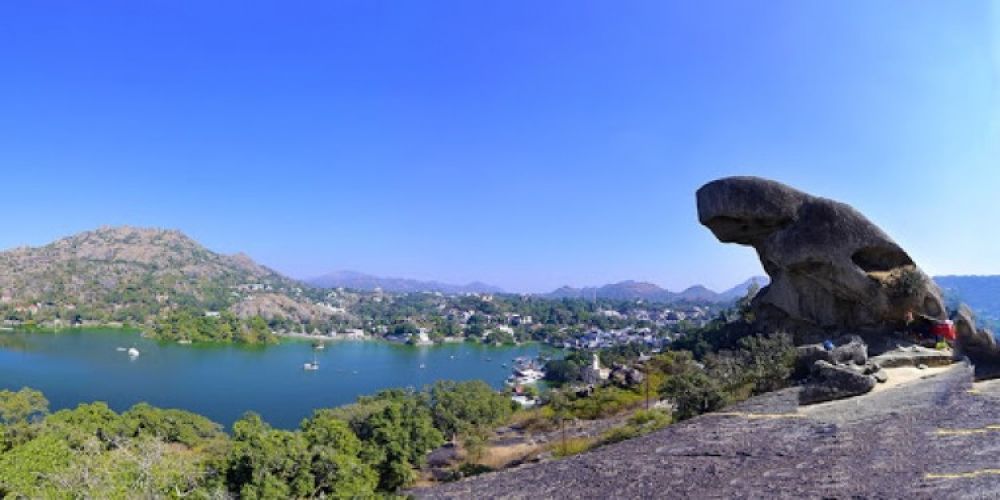

Mount Abu, the only hill station of Rajasthan, has long been a haven for travelers seeking respite from the scorching heat of the arid regions surrounding it. At the heart of this serene landscape lies one of its most whimsical and iconic attractions, Toad Rock.
Toad Rock is named for its uncanny resemblance to a toad about to leap into the sky-blue Nakki Lake below. This natural rock formation is a testament to the age-old volcanic activities that shaped the region. It stands as a sentinel, overseeing the tranquil waters of the lake and the verdant hills that envelope the area. The history of tourism in Mount Abu is synonymous with this rock, which has been drawing visitors since the British colonial era.
British Influence and the Genesis of Tourism
During the British Raj, Mount Abu was transformed into a summer retreat for the colonial elite. The establishment of this retreat in the late 19th century marked the beginning of structured tourism in the area. Toad Rock, being in proximity to Nakki Lake - a popular leisure spot for the British - became a must-visit site for those who traveled to the hill station to enjoy its cool climate and picturesque surroundings.
With the end of the British Raj and the subsequent independence of India, Mount Abu and its landmarks like Toad Rock continued to flourish as prime tourist destinations. Hotels, guest houses, and other tourist facilities began cropping up, catering to the needs of visitors. The Rajasthan Tourism Development Corporation (RTDC) and other private enterprises invested heavily in improving the accessibility and amenities around Toad Rock and Nakki Lake to enhance the tourist experience.
Accessibility has been steadily improved, with well-maintained paths leading up to Toad Rock for those wishing to get a closer look at the natural sculpture or to simply enjoy the panoramic views of the surrounding landscape from its vantage point.
Furthermore, recognizing the importance of this geological wonder, conservation efforts have been put in place to protect Toad Rock and its environs, ensuring that it remains a pristine spot for future generations to enjoy.
In recent years, Toad Rock has benefited from the growing trend towards eco-tourism and adventure tourism. Visitors are drawn to the area not only for its natural beauty but also for opportunities to engage in activities such as rock climbing and trekking. Local guides offer tailored experiences for both thrill-seekers and those looking to learn about the region's rich flora and fauna.
Additionally, the rise of social media has turned Toad Rock into a photogenic marvel, with tourists often seen capturing its unique form against the backdrop of a spectacular sunset or the calm early morning mist over Nakki Lake.
As tourism trends evolve, Mount Abu and Toad Rock continue to adapt, striving to offer a blend of nature, history, and adventure. Efforts are being made to promote sustainable tourism practices to preserve the natural charm of the area. Toad Rock, with its layered history and distinctive presence, remains a cornerstone in the story of Mount Abu's journey through time as a beloved destination for visitors from across the globe.